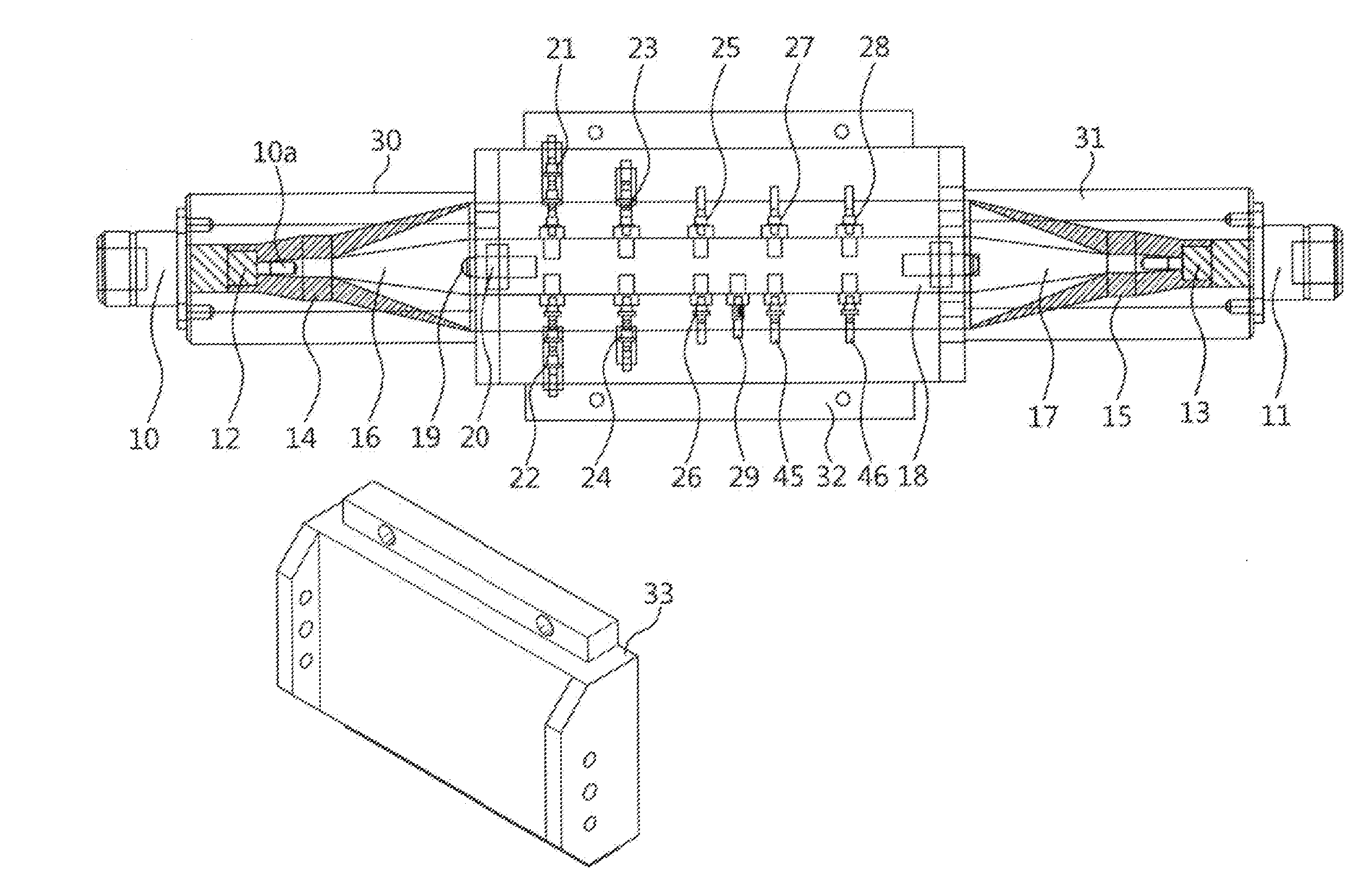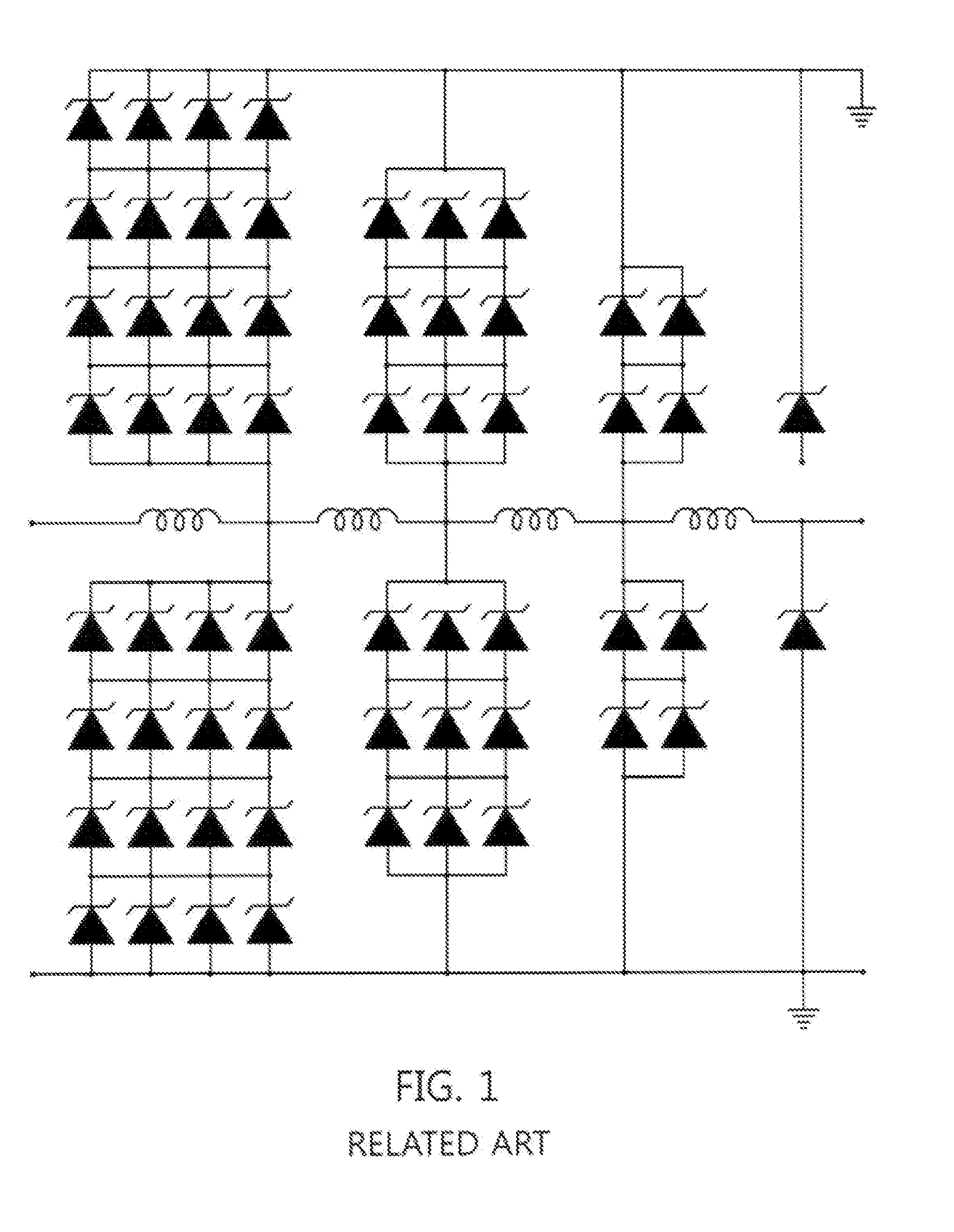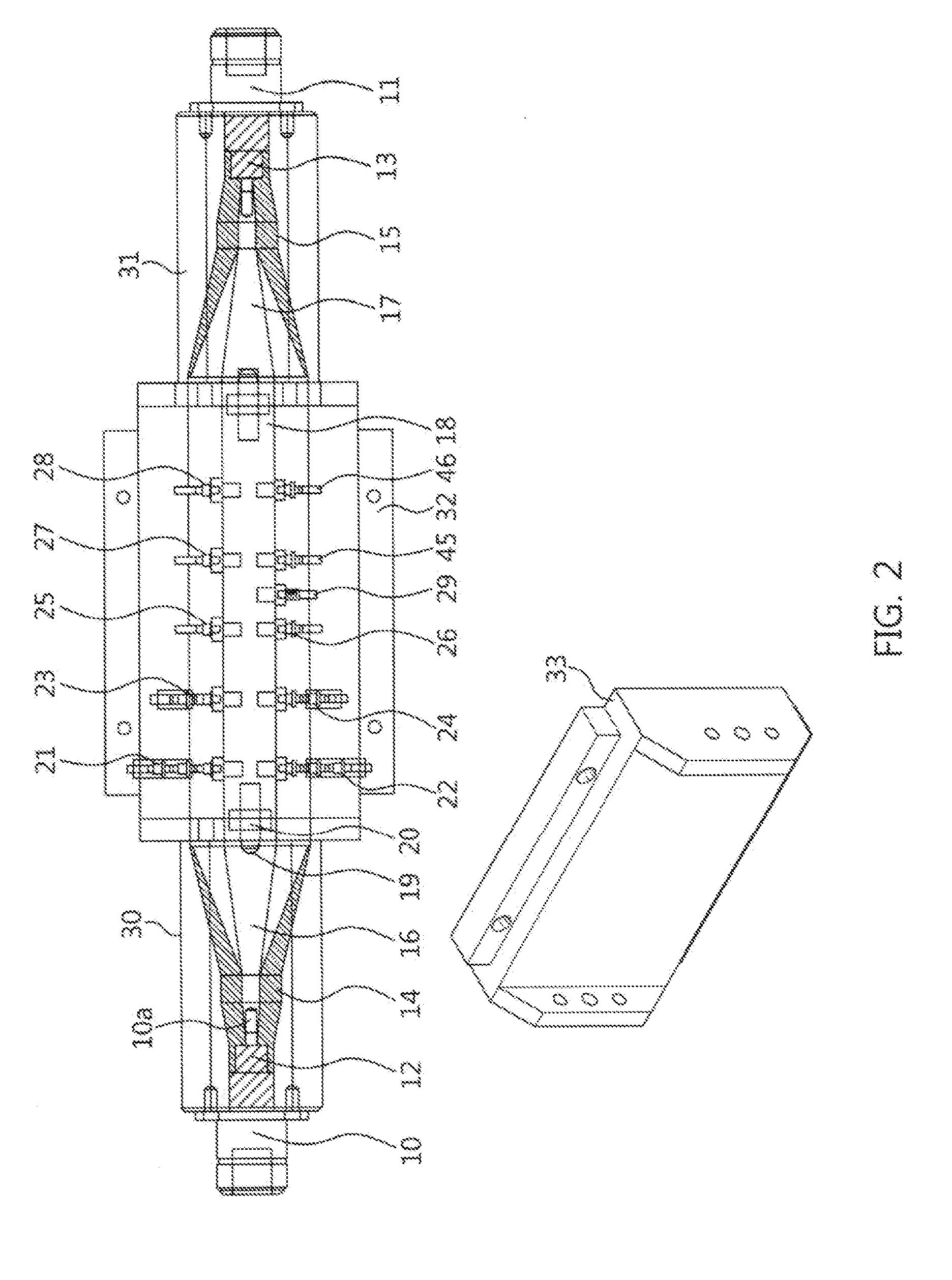Stacked diode limiter
a diode limiter and diode technology, applied in the direction of diodes, waveguides, electrical equipment, etc., can solve the problems of interference signal flowing into the in-band communication frequency band that cannot be eliminated using only a filtering method, physical damage or malfunction of the connected to the subsequent stage of the antenna,
- Summary
- Abstract
- Description
- Claims
- Application Information
AI Technical Summary
Benefits of technology
Problems solved by technology
Method used
Image
Examples
Embodiment Construction
[0043]Hereinafter, a stacked diode limiter according to embodiments of the present invention will be described in detail with reference to the attached drawings. Prior to the detailed description of the present invention, it should be noted that the terms or words used in the present specification and the accompanying claims should not be limitedly interpreted as having their common meanings or those found in dictionaries. Therefore, the embodiments described in the present specification and constructions shown in the drawings are only the most preferable embodiments of the present invention, and are not representative of the entire technical spirit of the present invention. Accordingly, It should be understood that various equivalents and modifications capable of replacing the embodiments and constructions of the present invention might be present at the time at which the present invention was filed.
[0044]FIG. 2 is a diagram showing the configuration of a stacked diode limiter acco...
PUM
 Login to View More
Login to View More Abstract
Description
Claims
Application Information
 Login to View More
Login to View More - R&D
- Intellectual Property
- Life Sciences
- Materials
- Tech Scout
- Unparalleled Data Quality
- Higher Quality Content
- 60% Fewer Hallucinations
Browse by: Latest US Patents, China's latest patents, Technical Efficacy Thesaurus, Application Domain, Technology Topic, Popular Technical Reports.
© 2025 PatSnap. All rights reserved.Legal|Privacy policy|Modern Slavery Act Transparency Statement|Sitemap|About US| Contact US: help@patsnap.com



